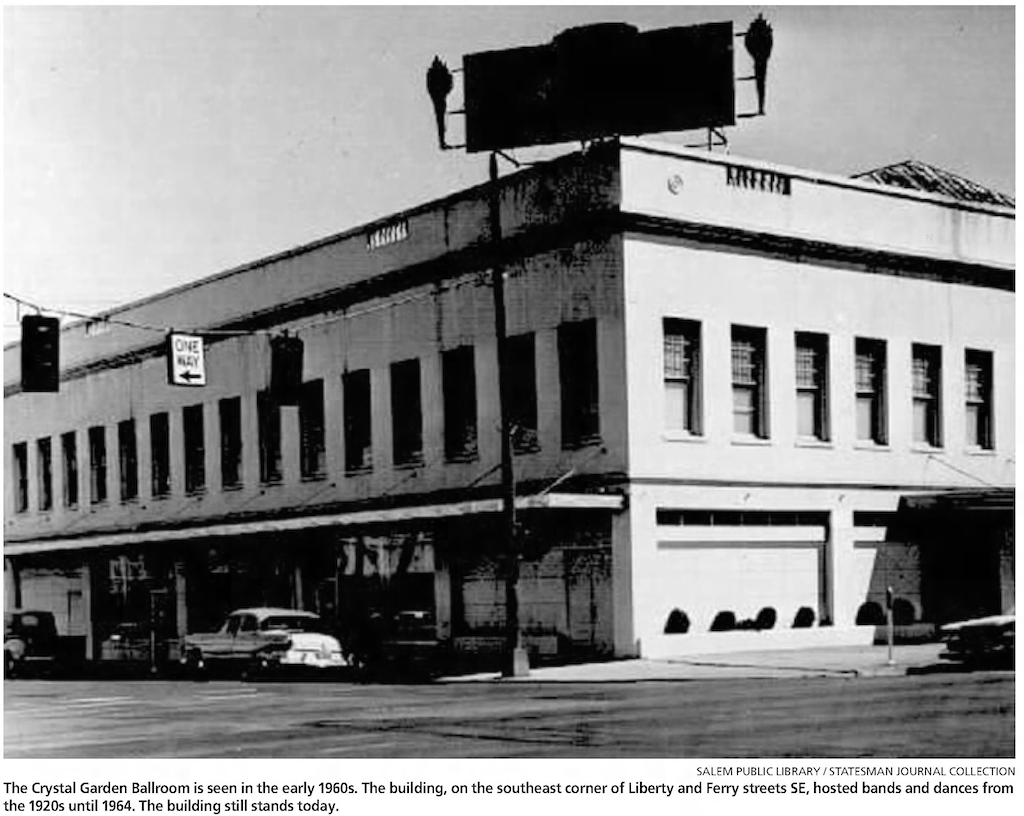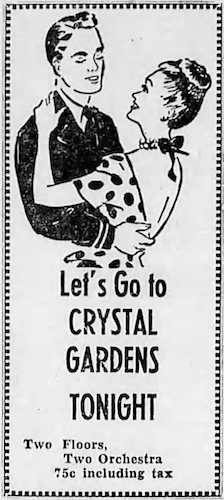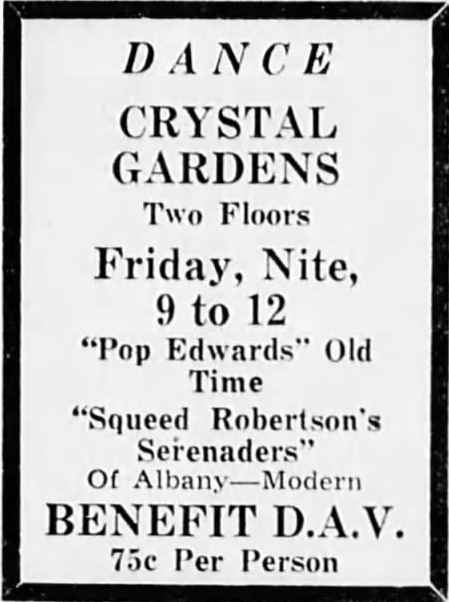Crystal Gardens
My grandfather, Kenneth Orville Holloway ("Kenny"), studied physics at Willamette University from 1946 to 1949. He'd later work as an engineering assistant at Hanford Engineer Works near Richland, Washington. This factory produced the plutonium explosive used in the "Fat Man" atomic bomb dropped on Nagasaki. After World War II, it produced most of the plutonium residing in the current US nuclear arsenal. As part of a family history project I've been tracing Kenny's path from his birth in Phoenix, Arizona to Hanford. The previous installment noted that Kenny's good academic record was marked by just one withdrawal. It was from the class he should have aced and thoroughly enjoyed, Senior Scholar in Physics. I hinted that Kenny's personal life might have played a role. This article takes a closer look.
In February 1947, during his Sophomore year, Kenny married. In December, his first child was born. By the time he graduated in 1949, another was on the way. Kenny's growing family almost certainly caused a change in priorities. Senior Scholar wasn't required for graduation. Dropping it to free time for family matters must have hurt, but it wouldn't prevent graduation.
The events that set Kenny on this new path are far from clear. If Kenny had dated at all at Salem High or during his Freshman year at Willamette, he never talked about it and there's no record of it. Browsing the pages of Kenny's college yearbook revealed, unsurprisingly, not one woman's face in the science departments. Nor did Kenny belong to any organizations (such as a church) that brought young men and women together.
While he may have lacked the opportunity and means to start a family, Kenny may have also lacked motivation. His mother died when he was five, leaving him and his sister to be raised by a single father who was at best ill-prepared for the job. His father quickly remarried, bringing not just a step-mother but two step-sisters into the Holloway home. The arrangement fell apart in divorce three months later. That kind of experience teaches kids lessons that stick.

So it's a little surprising that Kenny met his future wife at an establishment created to bring couples together. Well into the 1960s, Crystal Gardens (formerly known as "Crystal Garden Ballroom") was a Salem landmark. Constructed in the 1920s, the two-story building still stands at the corner of Liberty and Ferry Streets in Downtown Salem. Through the 1920s guests could swim in the first floor's indoor pool, or dance to live bands on the second floor. A large, multicolored lighted sign directed visitors to the corner building. Despite the swimming pool's ability to grab attention, it became a money loser when the Great Depression hit. In 1929, the owner replaced the pool with a second dance floor, offering guests access to either venue for a single admission price (the slogan was "two floors, two bands for two bits"). Crystal Gardens hosted a gubernatorial inauguration and Duke Ellington and his band among other notables.

Although the setting is clear, what isn't clear is what brought a bookish Physics major to Salem's best-known place to meet the opposite sex. Unfortunately, I don't have an answer because Kenny apparently never told anyone.

With no leads on the question of what brought Kenny to Crystal Gardens, I changed tactics by considering the question of when Kenny might have ventured there. Family oral history says that Kenny was a student at Willamette University at the time. Family oral history and the public record also reveal that the wedding took place in February 1947. This means that Kenny must have visited Crystal Gardens between January 1946 (the start of Spring semester at Willamette) and February 1947 (the date of the wedding).
With this window as a constraint, I searched Salem newspapers and the Willamette student paper for events that might have attracted the attention of a studious Physics major and World War II veteran. I found advertisements promoting various bands booked for Crystal Gardens, but there's little evidence that Kenny cared for music (or dancing) enough to go out of his way. There were a few special events such as a policemen's benefit advertised, but they hardly seemed interesting. Nor did I find anything linking Crystal Gardens and Willamette University, which was a surprise.
Nevertheless, one special event might have caught Kenny's attention. On Friday April 26, 1946, Crystal Gardens hosted a benefit for "D.A.V.", which appears to stand for Disabled American Veterans. According to Wikipedia:
The Disabled American Veterans (DAV) is an organization created in 1920 by World War I veterans for disabled military veterans of the United States Armed Forces that helps them and their families through various means. It was issued a federal charter by Congress in 1932. It currently has over 1 million members. …

Consistent with this idea, Kenny was initiated into Veterans of Foreign Wars (VFW) Post 6102 just days after the Crystal Garden DAV benefit. (Oregon Statesman May 11, 1946). Meadowlark VFW Post 6102 of Salem had been established earlier that year, committing itself to accept only World War II veterans during its first two years (Statesman Journal February 21, 1946).
There are at least two possibilities for the order of events. One is that Kenny joined the VFW where one or more members mentioned the benefit at Crystal Gardens and they went together. The other is that Kenny heard about the DAV benefit and went on his own, perhaps to show support or because he thought he might be able to meet some friends. Once there, he ran into some veterans who convinced him to join the VFW.
There are a couple of problems with the first idea. First, Kenny didn't seem to be a joiner. According to the yearbooks I reviewed, Kenny was a member of no clubs at either Salem High school or at Willamette University. As I've noted before neither Kenny nor his father were members of a church. Moreover, Kenny disliked the military, saying that "The best thing it did for me was the GI bill." The second problem is that according to family oral history, Kenny was alone at Crystal Gardens that night.
It seems more likely that Kenny would have heard about the benefit, went to Crystal Gardens on his own, and while there was reluctantly persuaded to join the VFW, where his membership in the group was reported a few days later. If Kenny did attend VFW meetings other than the one in which he was initiated, family oral history and the public record say nothing about it.
Assuming that Kenny was at Crystal Gardens on the night of Friday April 26, 1946, it's even possible to say more about where he was and what was happening. The advertisement for the DAV benefit notes that two bands were playing. The first, Pop Edwards, played on the "Old Time" floor, which was upstairs. The second, Squeed Robertson's Serenaders, played on the "Modern" floor, which was downstairs. Family oral history says that Crystal Gardens only had one floor, excluding the upper floor as the meeting spot.
If all of this is correct, the band that played when Kenny met his future wife was Squeed Robertson's Serenaders. They were from Albany, Oregon, located between Salem and Eugene along what is currently Interstate 5. An obituary for O. L. "Squeed" Robertson ran in the Statesman Journal on February 21, 1984. It noted:
Born in Corvallis, he moved to Albany as a child. … He was a musician and had a band that played at various Mid-Willamette Valley clubs. …
Whatever may have brought Kenny to Crystal Gardens that night or perhaps another, he approached two young women standing together. Addressing one of them, Kenny asked, "May I have this dance?" The other pushed her friend forward, saying "Oh, go on!" Under flashing lights and with a live band playing, the couple walked onto the dance floor built over what once was a swimming pool.